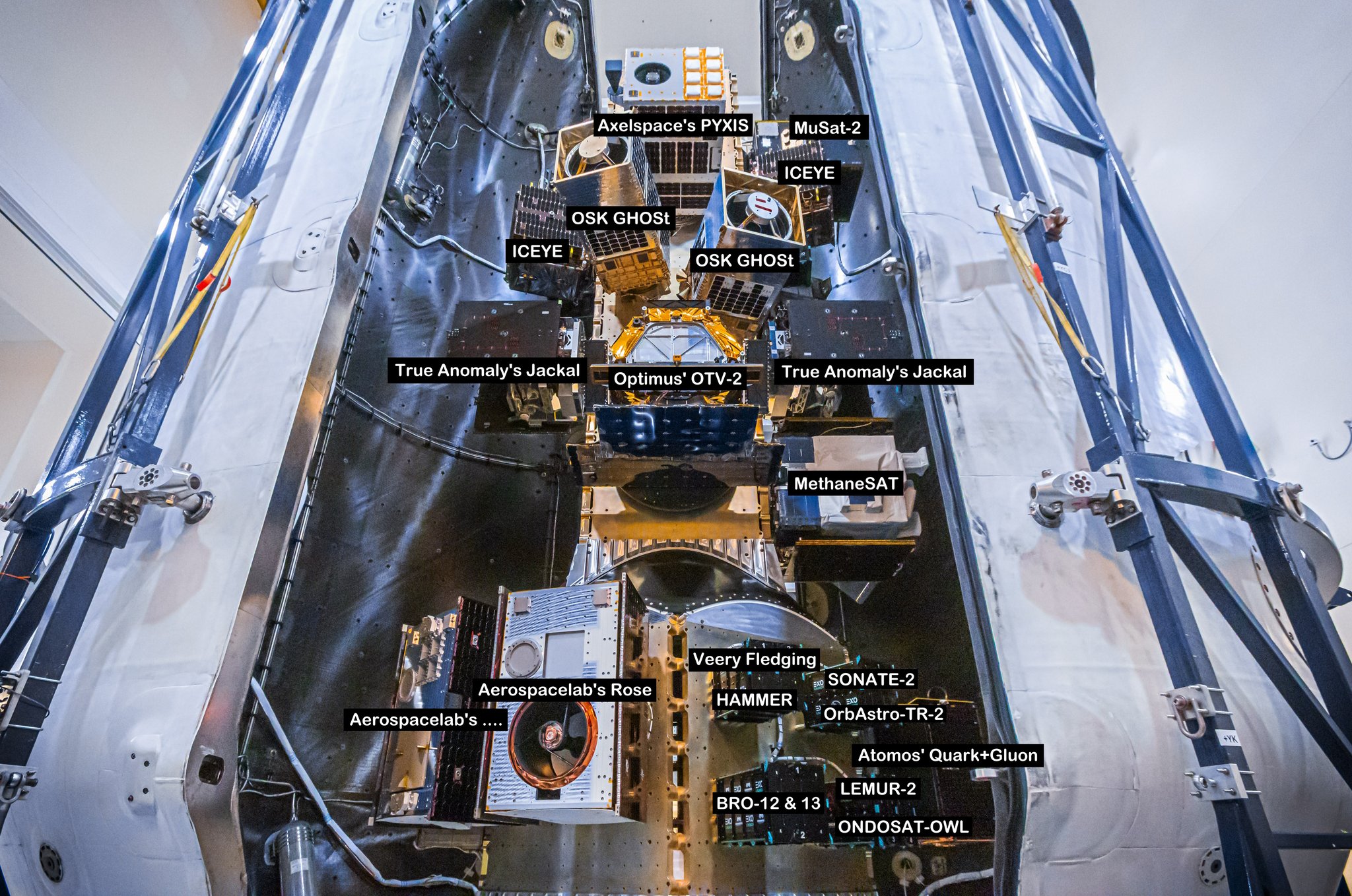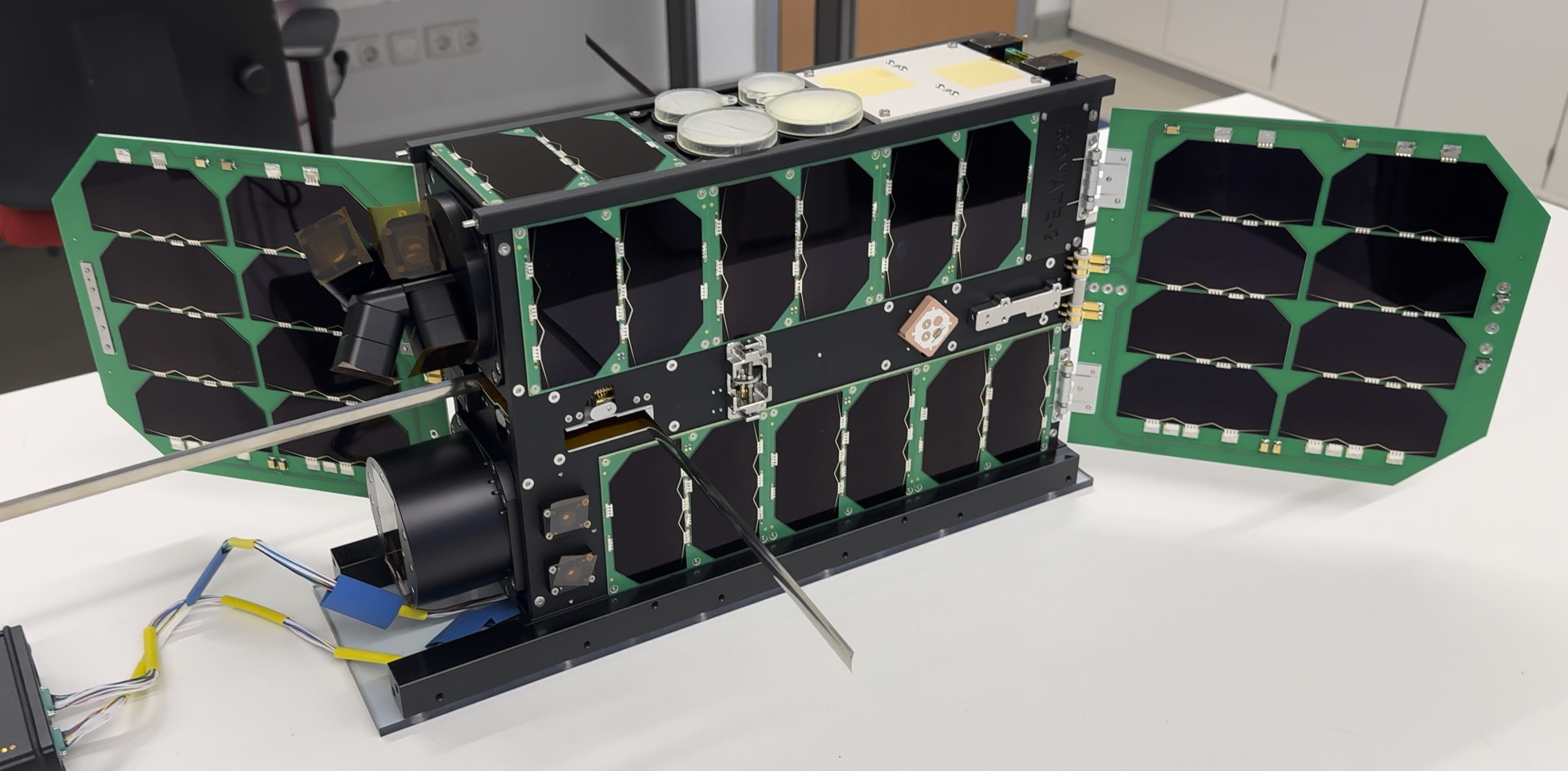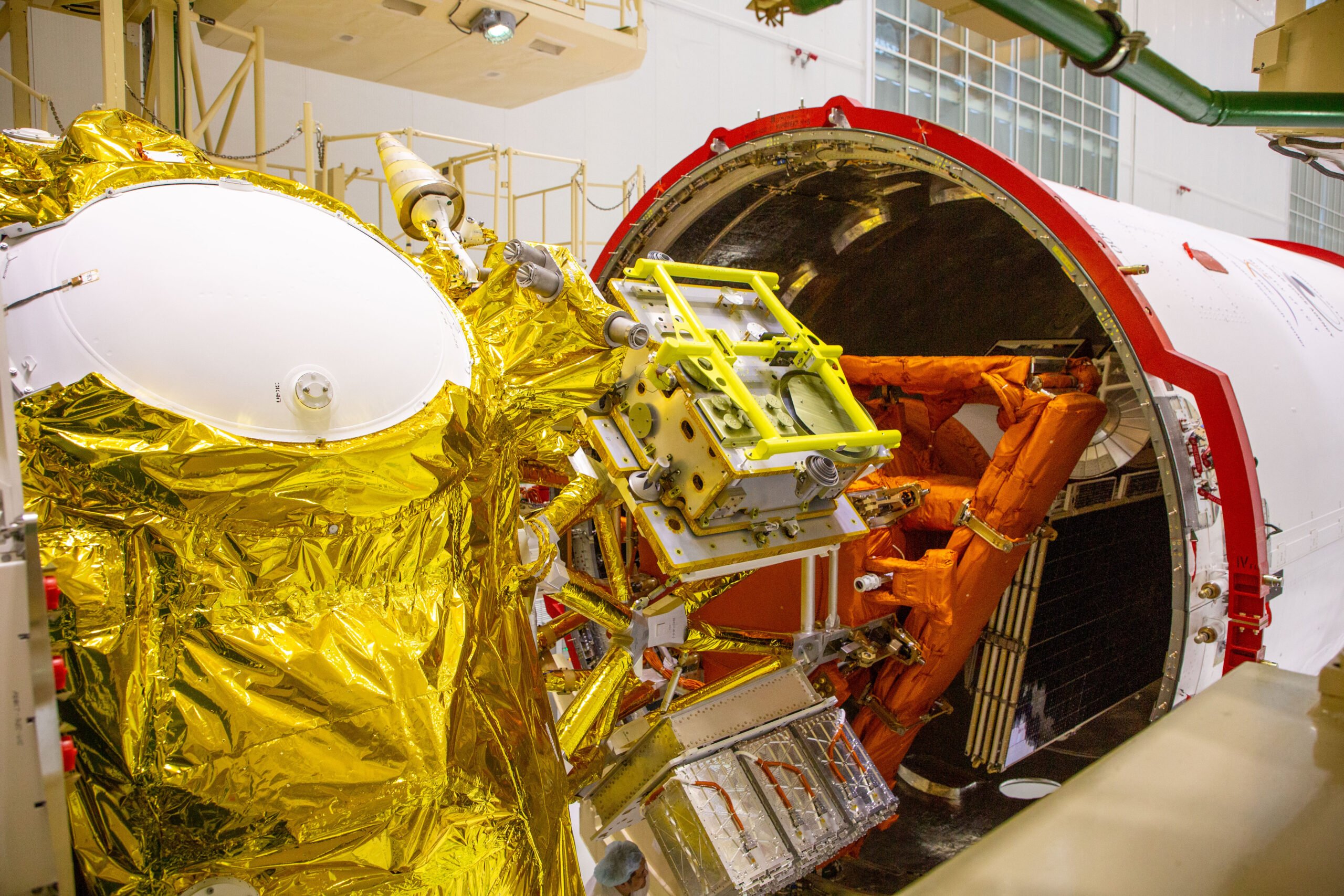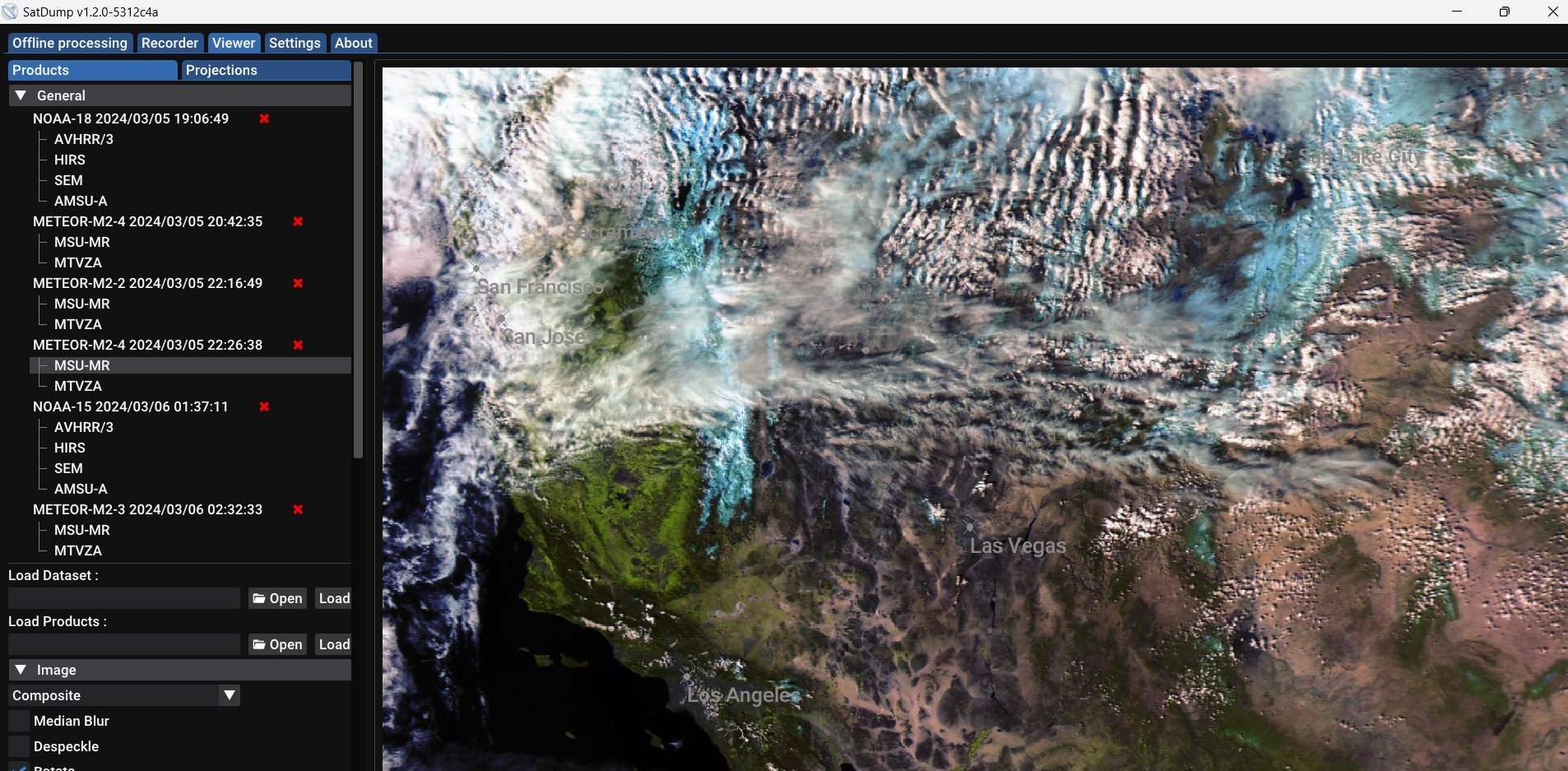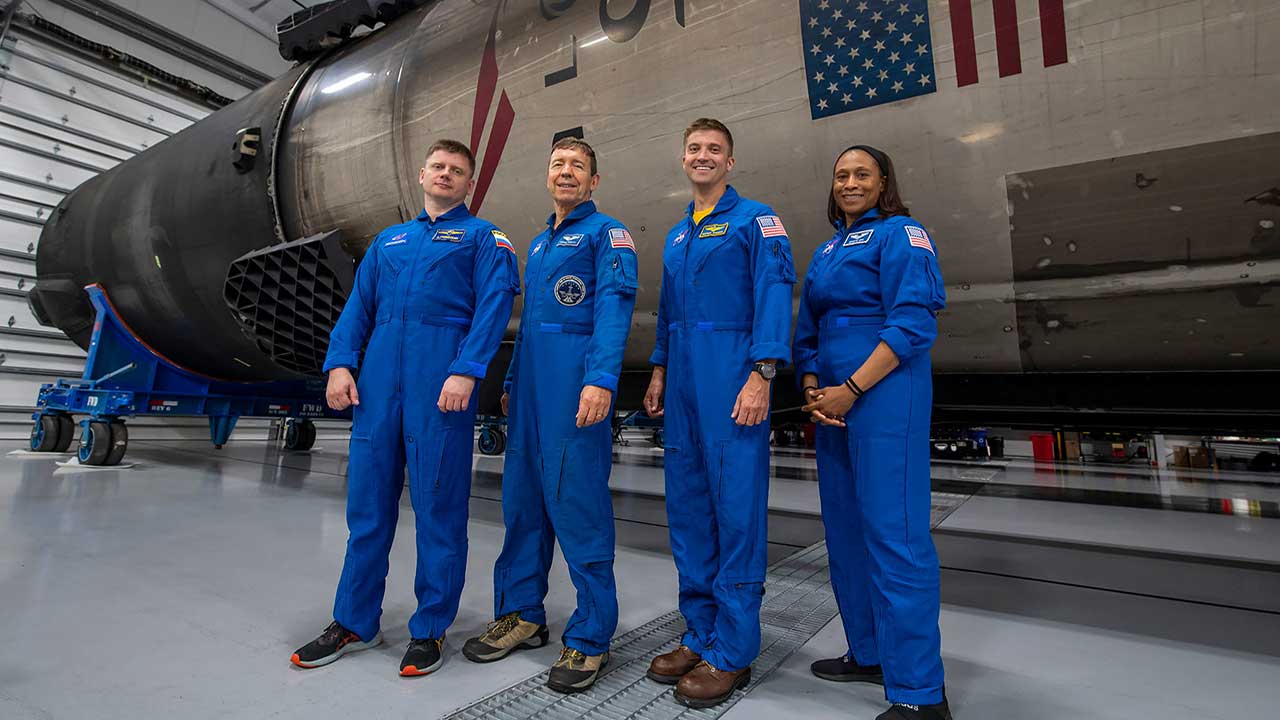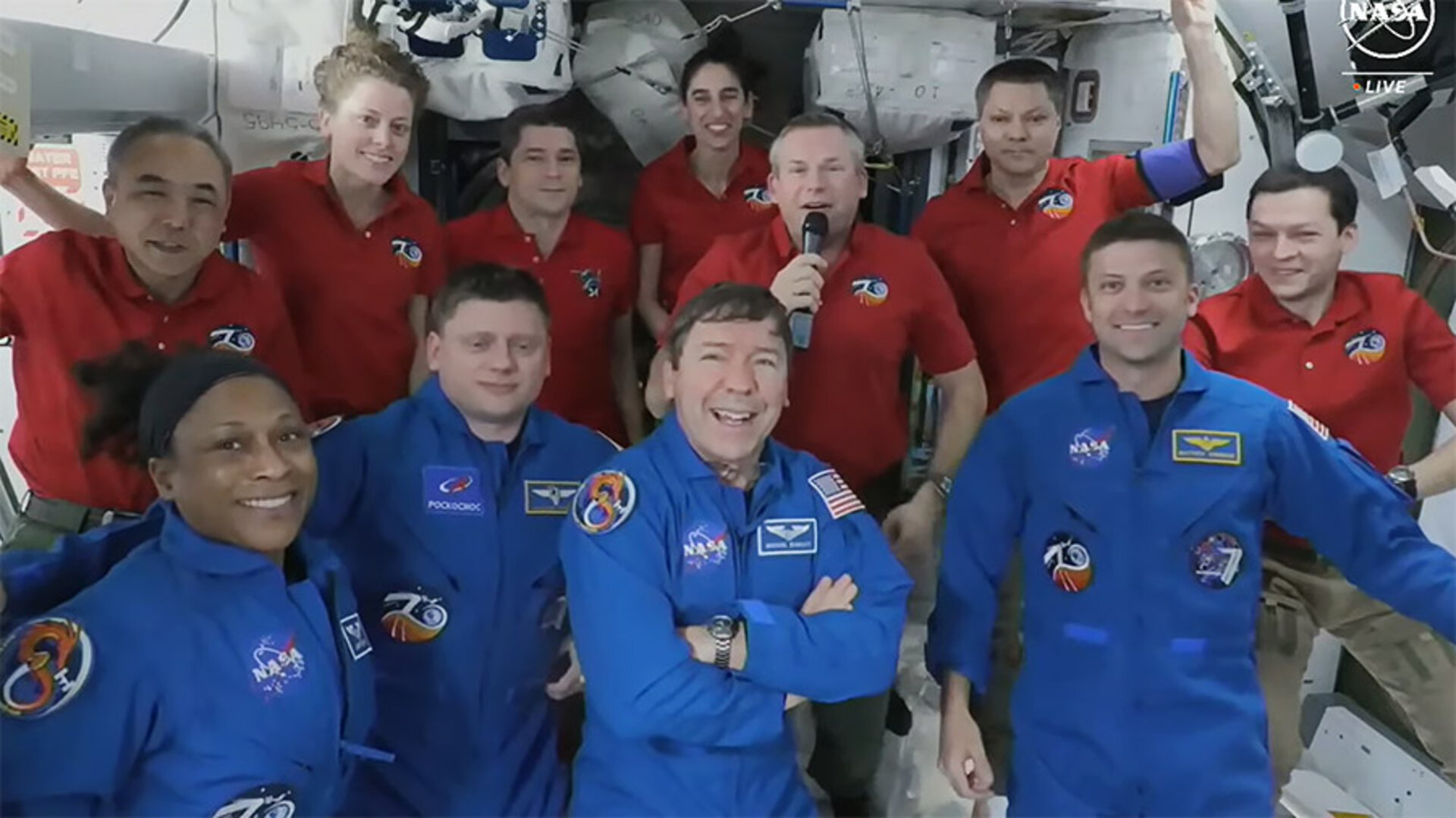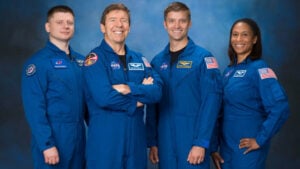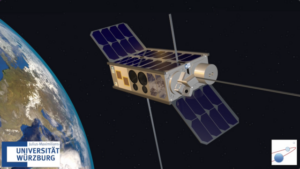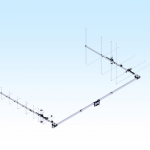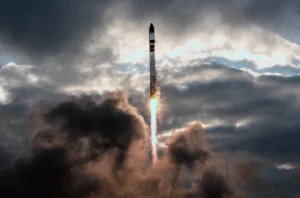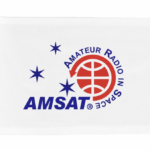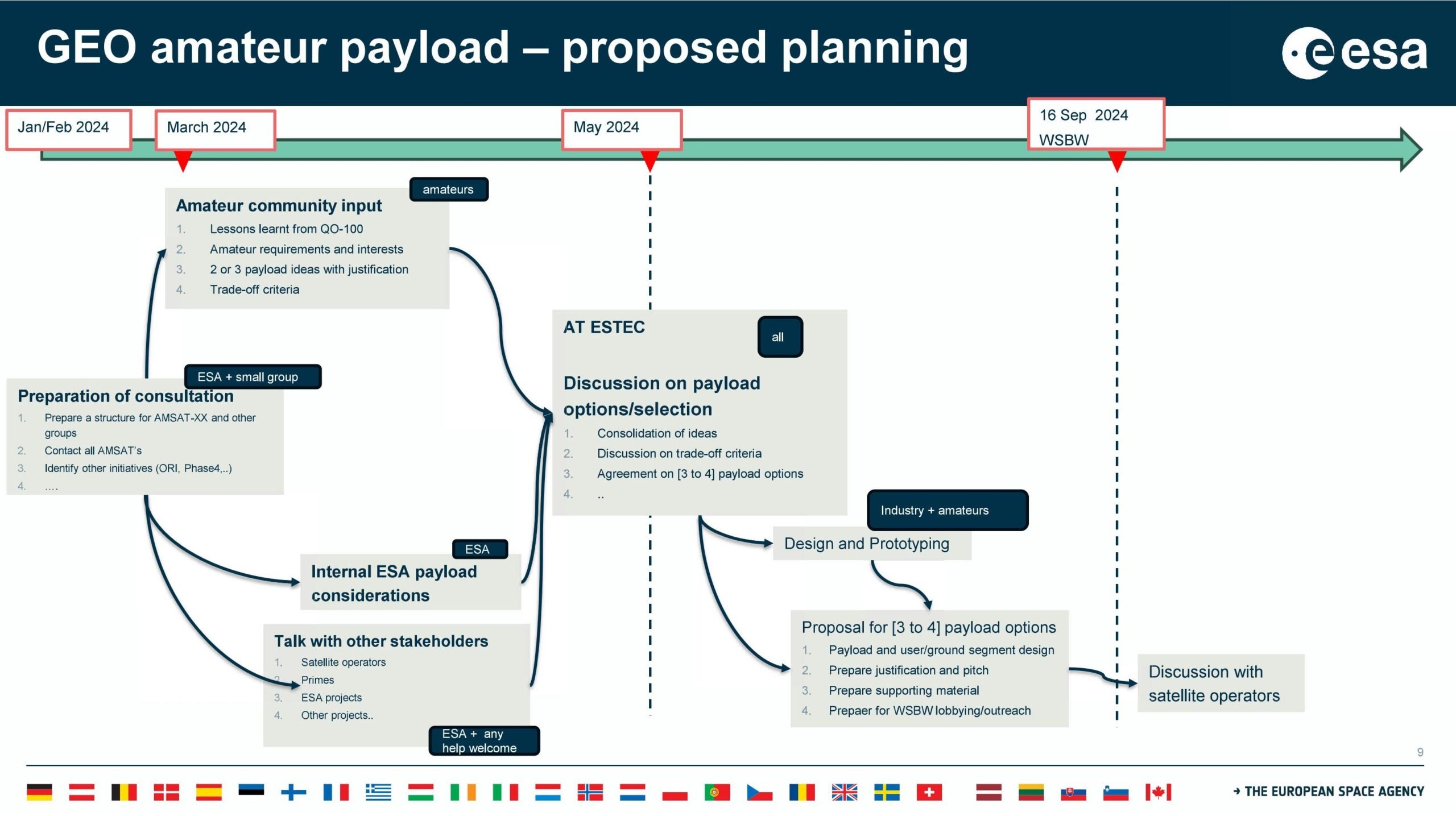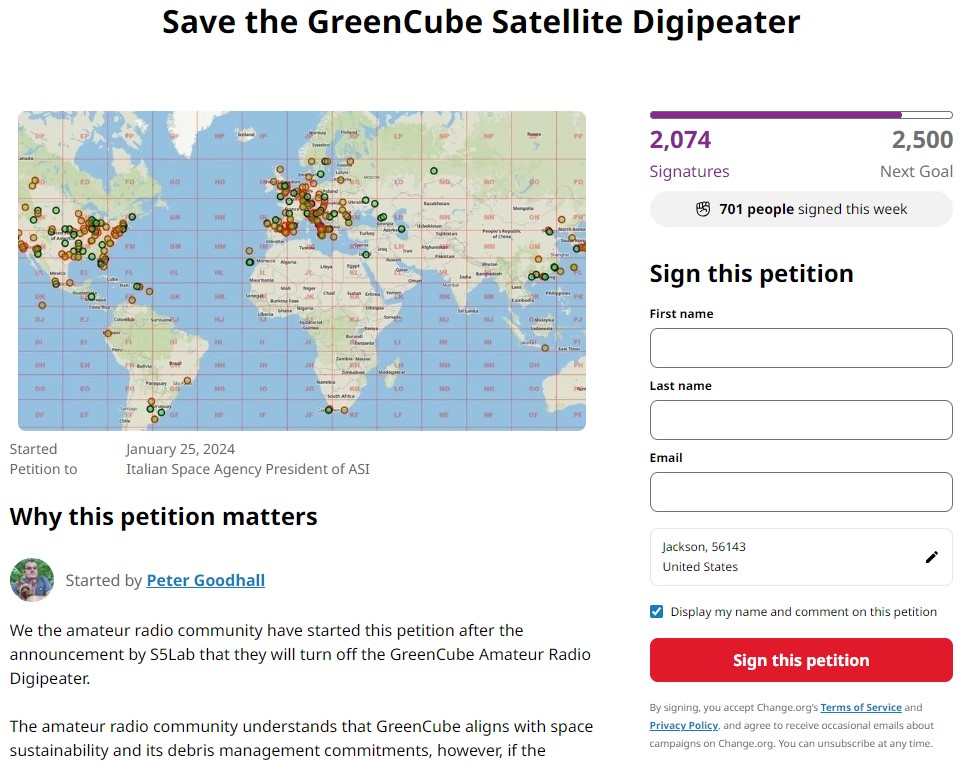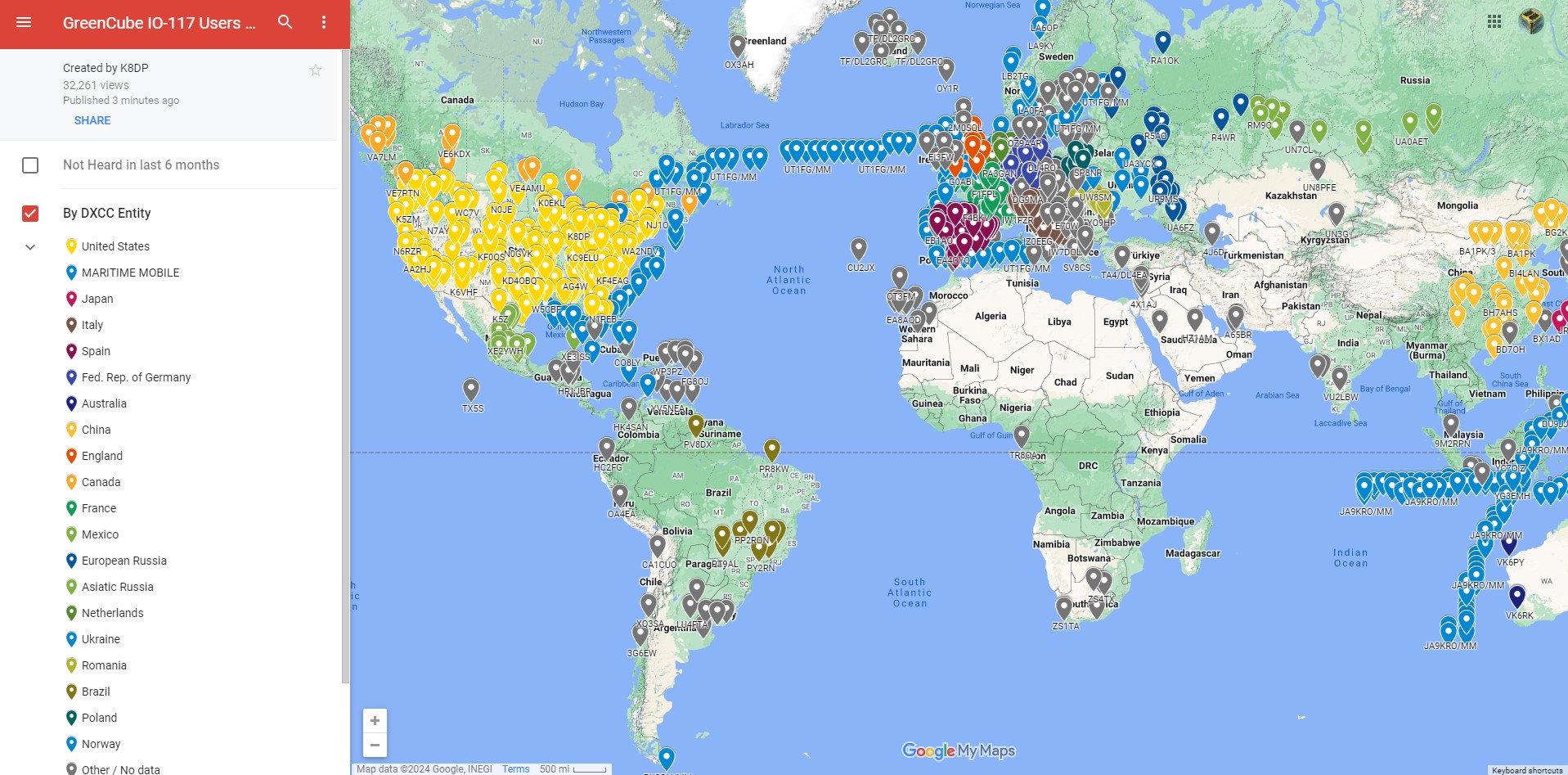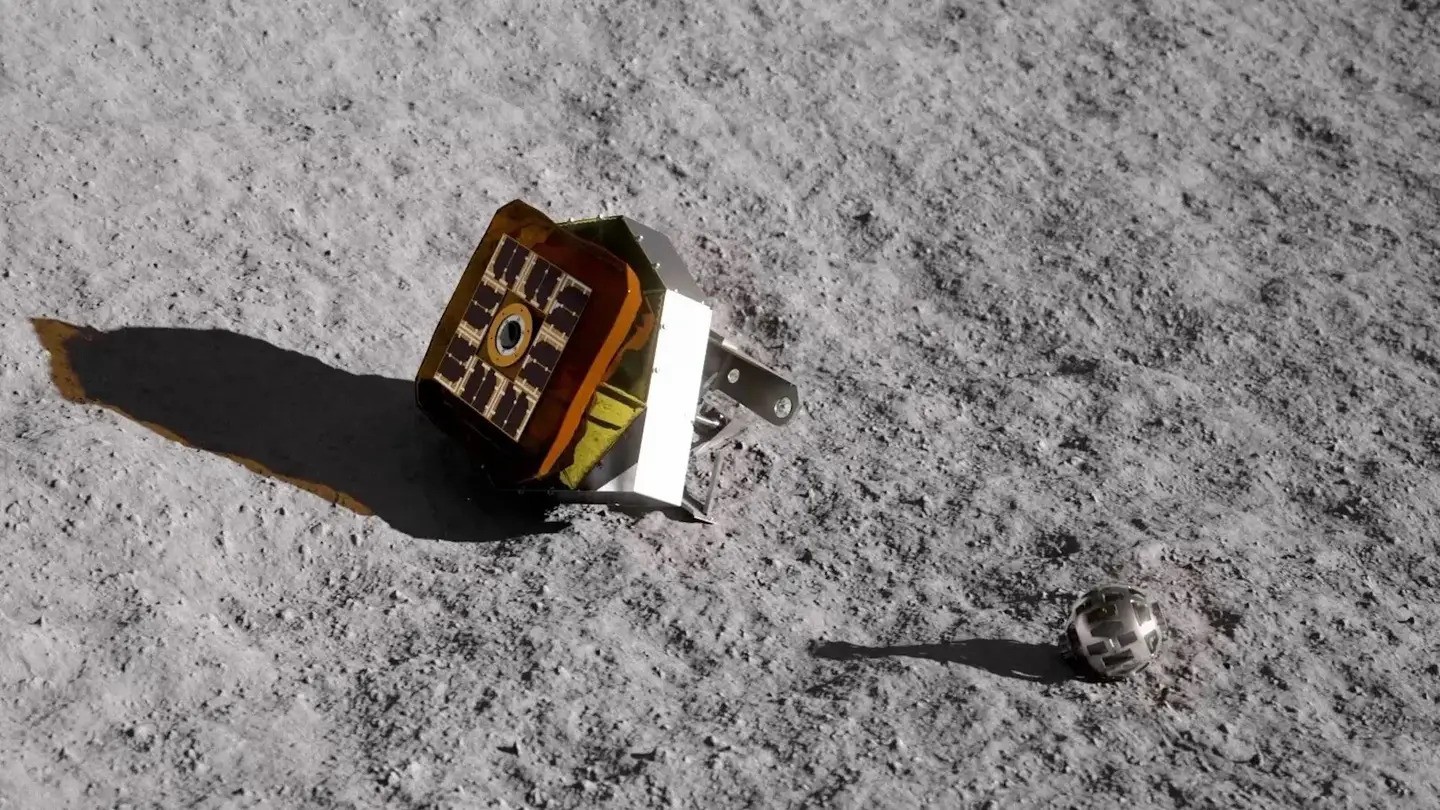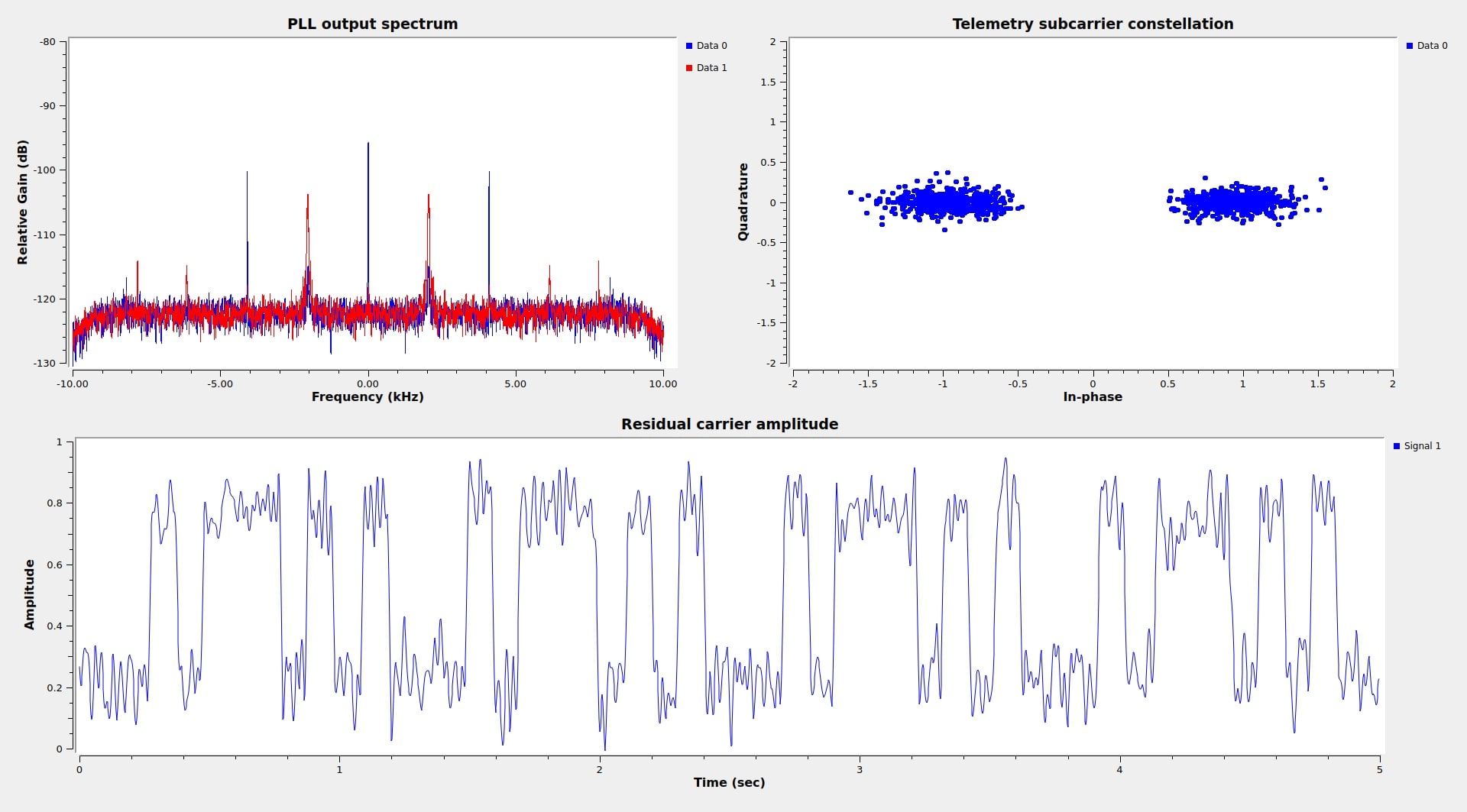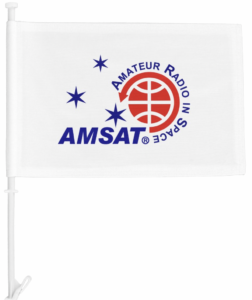In this edition:
* First SONATE 2 Images Received
* FUNcube Mode Change
* Free On-Line Amateur Radio Operating Class
* Starship Lifts Off On Third Test Flight
* Changes to AMSAT-NA TLE Distribution for March 15
* NASA’s SpaceX Crew-7 Finishes Mission, Returns to Earth
* ARISS News
* Upcoming Satellite Operations
* Hamfests, Conventions, Maker Faires, and Other Events
* Satellite Shorts From All Over
The AMSAT News Service bulletins are a free, weekly news and information service of AMSAT, the Radio Amateur Satellite Corporation. ANS publishes news related to Amateur Radio in Space including reports on the activities of a worldwide group of Amateur Radio operators who share an active interest in designing, building, launching and communicating through analog and digital Amateur Radio satellites.
The news feed on http://www.amsat.org publishes news of Amateur Radio in Space as soon as our volunteers can post it.
Please send any amateur satellite news or reports to: ans-editor [at] amsat.org
You can sign up for free e-mail delivery of the AMSAT News Service Bulletins via the ANS List; to join this list see: https://mailman.amsat.org/postorius/lists/ans.amsat.org/
ANS-077 AMSAT News Service Weekly Bulletins
To: All RADIO AMATEURS
From: Radio Amateur Satellite Corporation
712 H Street NE, Suite 1653
Washington, DC 20002
DATE 2024 March 17
First SONATE 2 Images Received
First images were received this week from the SONATE 2 satellite. A low-resolution Slow-Scan TV (SSTV) image that had been pre-loaded onto the satellite prior to launch was received on March 8. The first wide field of view earth image from the onboard camera was received on March 11. Both images can be viewed at https://www.informatik.uni-wuerzburg.de/en/aerospaceinfo/staff/kayal/research-activities/sonate-2/
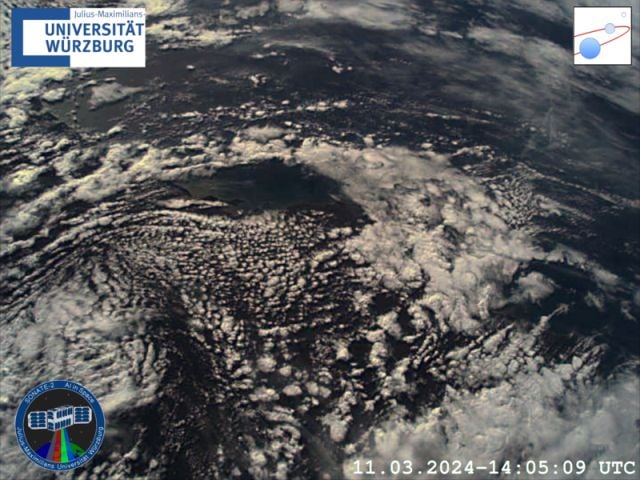
[12.03.2024 First wide field of view image from SONATE-2]
SONATE 2 was built by students and faculty in the Aerospace Information Technology program at at Würzburg University in Germany. It was launched on March 4 as part of the SpaceX Transporter 10 mission from Space Launch Complex 4E in Vandenberg SFB, Calif.
Using Doppler measurements, Nico Janssen, PAØDLO, has identified SONATE 2 as object 59112. The telemetry downlink frequency is 437.0254 MHz, just slightly above the published target frequency of 437.025 MHz. Telemetry is in 9k6 G3RUH GMSK AX.25 using a protocol that may be downloaded from https://www.informatik.uni-wuerzburg.de/fileadmin/1003-ifex/2024/SONATE-2_protocol_definition_for_radio_amateurs.xlsx
The SSTV downlink is at 145.880 MHz FM using the Martin M1 protocol. The satellite also carries an APRS digipeater for 145.825 MHz, but the digipeater is not yet active. A schedule for upcoming SSTV transmissions is published at https://www.informatik.uni-wuerzburg.de/aerospaceinfo/mitarbeiter/kayal/forschungsprojekte/sonate-2/information-for-radio-amateurs/
[ANS thanks Würzburg University and Nico Janssen, PAØDLO, for the above information.]
The 2024 AMSAT President’s Club coins are here now!
Help Support GOLF and Fox Plus
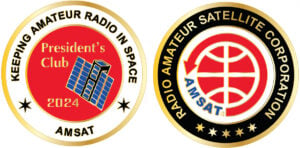
Join the AMSAT President’s Club today and help
Keep Amateur Radio in Space!
https://www.amsat.org/join-the-amsat-presidents-club/
FUNcube Mode Change
The FUNcube team are pleased to announce that FUNcube 1 (aka AO-73) is out of Safe mode back in Eclipse mode as of March 11. “Eclipse mode” means that the transponder is normally operational only when the satellite is in eclipse, i.e. the solar panels are NOT being illuminated.
The nominal transponder frequencies are:
Uplink: 435.150 – 435.130 MHz LSB (Inverting)
Downlink: 145.950 – 145.970 MHz USB
Telemetry Tx: 145.935 MHz BPSK
(The passband may be up to 15kHz higher depending on on-board temps. Lower temperatures give higher freqs!)
[ANS thanks David Johnson, G4DPZ, and https://funcube.org.uk/ for the above information.]
Need new satellite antennas?
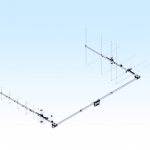
Purchase M2 LEO-Packs from the AMSAT Store.
When you purchase through AMSAT, a portion of the proceeds goes towards
Keeping Amateur Radio in Space.
https://amsat.org/product-category/hardware/
Free On-Line Amateur Radio Operating Class
A free, weekly, 3-hour Amateur Radio Operating Class on Zoom will begin on Thursday April 4 and run through June 20 at 6:30 p.m. Eastern / 5:30 p.m. Central time. The presenters will be various experienced folks in the various subjects.
A detailed syllabus will be published before the classes begin. Attend them all, or any that you like, but you must register for the classes. To receive registration information, contact Rol Anders, K3RA, at [email protected].
Subjects will include:
- All About Operating–A general Introduction
- Amateur Radio Organizations—Local to International
- Ham Radio Awards
- DXing-History and Tips from the Experts
- QSLing-How to get that needed card for DXCC or WAS
- VHF/UHF Weak Signal Work and “Roving”
- Image Operating—Slow Scan and Fast Scan TV
- Remote Station control over internet
- Learning CW in the no-code era
- Digital Modes—From RTTY to FT8 and beyond
- Contesting—How to get started, tips for the beginner and intermediated contester
- Logging Software—What’s available, how to use
- Propagation—A general intro to HF Propagation
- *Amateur Satellites—How to get started*
- Portable (backpacking) operation—Tips from an expert
- Setting Up a Modern (or not so modern) HF Station
- Lightning Protection and Grounding
- Traffic Handling
- Public Service, Emergency Communications
[ANS thanks Dan Hausauer, WØCN, and Rol Anders, K3RA, for the above information.]
Starship Lifts Off On Third Test Flight
SpaceX’s Starship vehicle lifted off on its third test flight March 14, making significant progress compared to its first two by achieving most of its planned test milestones.
The Starship/Super Heavy vehicle lifted off from the company’s Starbase site at 9:25 a.m. Eastern. The liftoff was delayed by nearly an hour and a half because of ships in restricted waters offshore. SpaceX reported no technical issues during the countdown.
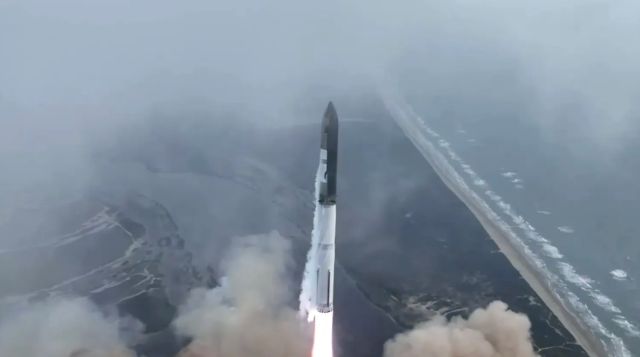
[Starship lifts off on its third integrated test flight March 14. Credit: SpaceX webcast]
The Super Heavy booster fired all 33 of its Raptor engines for nearly three minutes before executing “hot staging”, with the Starship upper stage’s engines igniting while still attached to Super Heavy before separating.
The booster then performed burns to attempt what SpaceX webcast hosts called a “soft splashdown” in the Gulf of Mexico, where it would not be recovered. However, the landing burn did not appear to go correctly, and the company later said that the booster broke apart 462 meters above the ocean after lighting several Raptor engines for a landing burn.
The Starship upper stage performed its burn, placing the vehicle onto its planned suborbital trajectory. It avoided the fate of the previous Starship launch in November, when the vehicle broke apart late in its burn after catching fire while venting propellant.
While in space on its suborbital trajectory, SpaceX opened a payload bay door that will be used on later Starship vehicles for deploying Starlink satellites. It also performed an in-space propellant transfer demonstration as part of a NASA contract where it would move propellant from one tank within the vehicle to another. SpaceX said it was evaluating the data from both tests.
SpaceX had planned to perform a brief relight of a Raptor engine on Starship about 40 minutes after liftoff, but the company said on the webcast that this test was skipped for reasons not immediately known. The company later said the engine test was called off because of the vehicle’s roll rates.
Several minutes later, the vehicle started reentry. A camera mounted on a flap on Starship provided dramatic images of the reentry, relayed through Starlink satellites. Telemetry was lost about 49 and a half minutes after liftoff when the vehicle was descending through an altitude of 65 kilometers. SpaceX later said on the webcast that it lost contact through both its own Starlink satellites as well as through NASA TDRSS data relay satellites at the same time, speculating that the vehicle may have broken up.
While the mission did not achieve all its test objectives, the company considered the launch a success. “What we achieved on this flight will provide invaluable data to continue rapidly developing Starship,” it said in a statement.
[ANS thanks SpaceNews for the above information.
Want to fly the colors on your own grid expedition?
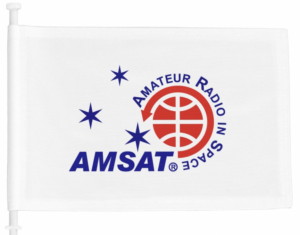
Get your AMSAT car flag and other neat stuff from our Zazzle store!
25% of the purchase price of each product goes towards
Keeping Amateur Radio in Space
https://www.zazzle.com/amsat_gear
Changes to AMSAT-NA TLE Distribution for March 15
Two Line Elements or TLEs, often referred to as Keplerian elements or keps in the amateur community, are the inputs to the SGP4 standard mathematical model of spacecraft orbits used by most amateur tracking programs. Weekly updates are completely adequate for most amateur satellites. TLE bulletin files are updated daily in the first hour of the UTC day. New bulletin files will be posted immediately after reliable elements become available for new amateur satellites. More information may be found at https://www.amsat.org/keplerian-elements-resources/.
This week there are no additions or deletions to the AMSAT TLE distribution.
[ANS thanks AMSAT Orbital Elements page for the above information.]
NASA’s SpaceX Crew-7 Finishes Mission, Returns to Earth
The SpaceX Crew Dragon Endeavour spacecraft, with NASA astronaut Jasmin Moghbeli, KI5WSL, ESA (European Space Agency) astronaut Andreas Mogensen, KG5GCZ, Japan Aerospace Exploration Agency (JAXA) astronaut Satoshi Furukawa, KE5DAW, and Roscosmos cosmonaut Konstantin Borisov aboard, splashed down in the Gulf of Mexico off the coast of Pensacola, Florida, on Tuesday, March 12, 2024. Moghbeli, Mogensen, Furukawa, and Borisov are returning after nearly six-months in space as part of Expedition 70 aboard the International Space Station.
The Crew-7 mission lifted off at 3:27 a.m. on Aug. 26, 2023, on a Falcon 9 rocket from NASA’s Kennedy Space Center in Florida. About 30 hours later, Dragon docked to the Harmony module’s space-facing port. Crew-7 undocked at 11:20 a.m. Monday, March 11, to begin the trip home.
Moghbeli, Mogensen, Furukawa, and Borisov traveled 84,434,094 miles during their mission, spent 197 days aboard the space station, and completed 3,184 orbits around Earth. The Crew-7 mission was the first spaceflight for Moghbeli and Borisov. Mogensen has logged 209 days in space over his two flights, and Furukawa has logged 366 days in space over his two flights.
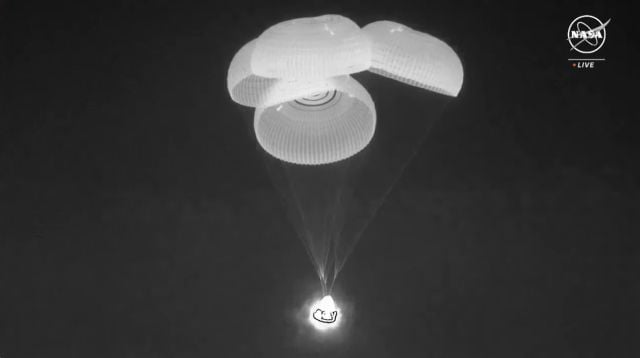
[A thermal screenshot showing the successfully deployed four parachutes of the Dragon Capsule as it makes its descent on March 12]
(Image credit: NASA)
Throughout their mission, the Crew-7 members contributed to a host of science and maintenance activities and technology demonstrations, including a number of ARISS amateur radio contacts. Moghbeli conducted one spacewalk, joined by NASA astronaut Loral O’Hara, replacing one of the 12 trundle bearing assemblies on the port solar alpha rotary joint, which allows the arrays to track the Sun and generate electricity to power the station.
The crew contributed to hundreds of experiments and technology demonstrations, including the first study of human response to different spaceflight durations, and an experiment growing food on the space station.
This was the third flight of the Dragon spacecraft, named Endurance. It also previously supported the Crew-3 and Crew-5 missions. The spacecraft will return to Florida for inspection and processing at SpaceX’s refurbishing facility at Cape Canaveral Space Force Station, where teams will inspect the Dragon, analyze data on its performance, and process it for its next flight.
The Crew-7 flight is part of NASA’s Commercial Crew Program and its return to Earth follows on the heels of NASA’s SpaceX Crew-8 launch, which docked to the station March 5, beginning another science expedition. That crew consists of Matthew Dominick, KCØTOR, Michael Barratt, KD5MIJ, Jeanette Epps, KF5QNU, and Alexander Grebenkin, RZ3DSE.
[ANS thanks NASA for the above information.]
ARISS NEWS
Amateurs and others around the world may listen in on contacts between amateurs operating in schools and allowing students to interact with astronauts and cosmonauts aboard the International Space Station. The downlink frequency on which to listen is 145.800 MHz worldwide.
Second Chance School of Orestiada, Orestiada, Greece, telebridge via VK4KHZ
The ISS callsign is presently scheduled to be NA1SS
The scheduled crewmember is Loral O’Hara KI5TOM, Mike Barratt, KD5MIJ (Observing)
The Moderator is scheduled to be Will KW4WZ
The ARISS mentor is IKØWGF
Contact is go for: Wed 2024-03-20 17:45:54 UTC 60 deg
Watch for Livestream at https://youtube.com/@sdeorestiadas9736?si=RPdn0JxEjpbK2Rhx
Amur State University, Blagoveshchensk, Russia, direct via TBD
The ISS callsign is presently scheduled to be RSØISS
The scheduled crewmember is Aleksandr Grebyonkin, RZ3DSE
The ARISS mentor is RV3DR
Contact is go for Mon 2024-03-25 08:40 UTC
Kursk, Russia, direct via TBD
The ISS callsign is presently scheduled to be RSØISS
The scheduled crewmember is Aleksandr Grebyonkin, RZ3DSE
The ARISS mentor is RV3DR
Contact is go for Wed 2024-03-27 14:55 UTC
Ufa, Russia, direct via TBD
The ISS callsign is presently scheduled to be RSØISS
The scheduled crewmember is Marina Vasilevskaya
The ARISS mentor is RV3DR
Contact is go for Fri 2024-03-29 16:20 UTC
The crossband repeater is active (145.990 MHz up {PL 67} & 437.800 MHz down). If any crewmember is so inclined, all they have to do is pick up the microphone, raise the volume up, and talk on the crossband repeater. So give a listen, you just never know.
The packet system is currently misconfigured (145.825 MHz up & down). The SSTV system is currently stowed.
As always, if there is an EVA, a docking, or an undocking; the ARISS radios are turned off as part of the safety protocol.
Note, all times are approximate. It is recommended that you do your own orbital prediction or start listening about 10 minutes before the listed time.
The latest information on the operation mode can be found at https://www.ariss.org/current-status-of-iss-stations.html
The latest list of frequencies in use can be found at https://www.ariss.org/contact-the-iss.html
[ANS thanks Charlie Sufana, AJ9N, one of the ARISS operation team mentors for the above information.]
Upcoming Satellite Operations
Jay Stephenson, WA1JAY, pays a visit to Paradise Isl. from March 15 to April 2. QRV as C6A/WA1JAY on HF (SSB, FT4/8) and via FM satellites. QSL via ClubLog OQRS, LoTW.
F4DXV Jérôme (@F4DXV) and EA4NF Philippe (@EA4NF_SAT) announce that they will be actívating Noirmoutier island EU-064 IN86 from April 1 to 4, 2024 with the special callsign TM4J. This International DXpedition is the 1st 100% SAT from this French island:
LEO (FM+SSB)
GEO (QO-100)
MEO (GREENCUBE IO-117)
Updates available on @TM4J_SAT
Please submit any additions or corrections to k5zm (at) comcast (dot) net.
A growing number of satellite rovers are currently engaged in sharing their grid square activations on https://hams.at. By visiting the website, you gain easy access to comprehensive information about the operators responsible for activating specific grid squares. Additionally, you have the ability to assess the match score between yourself and a particular rover for a given pass, while also being able to identify the upcoming satellite passes that are accessible from your location.
[ANS thanks Ian Parsons, K5ZM, AMSAT rover page manager, for the above information.]
Hamfests, Conventions, Maker Faires, and Other Events
AMSAT Ambassadors provide presentations, demonstrate communicating through amateur satellites, and host information tables at club meetings, hamfests, conventions, maker faires, and other events.
AMSAT-Francophone Seventh Amateur Radio Space Meeting
Saturday March 16th – Sunday March 17th
Electrolab Hackerspace à Nanterre
52 Rue Paul Lescop
92000 Nanterre, France
https://site.amsat-f.org/
JAMSAT Symposium 2024
Saturday March 23rd – Sunday March 24th
Hotel Binario Saga Arashiyama
3-4 Hiromichicho, Saga Tenryuji, Ukyo Ward
Sagano, Kyoto, Japan
https://www.jamsat.or.jp/?p=2446
Raleigh NC Hamfest
Saturday, 6 April 2024
Jim Graham Building, NC State Fairgrounds
https://www.rarsfest.org/
2024 CubeSat Developer’s Workshop
Tuesday April 23rd – Thursday April 25th
Cal Poly, San Luis Obispo, CA
https://www.cubesatdw.org/
Dayton Hamvention 2024
Friday May 17th – Sunday May 19th
Greene County Fairgrounds and Expo Center
120 Fairground Road
Xenia, OH 45385
https://hamvention.org
[ANS thanks the AMSAT Events page for the above information.]
Satellite Shorts From All Over
+ NASA has terminated its OSAM-1 mission, a multibillion-dollar endeavor aimed at showcasing robotic satellite servicing technology in space, due to ongoing technical, cost, and schedule challenges. Originally intended to demonstrate satellite refueling, the mission expanded to include in-orbit assembly, incorporating a 16-foot robotic arm named SPIDER. Despite significant congressional funding, the project faced continual delays and ballooning costs, reaching $1.5 billion with an estimated additional cost of nearly $1 billion for launch. Changes in the satellite servicing market, with a shift towards alternative technologies like Northrop Grumman’s Mission Extension Vehicle, contributed to the cancellation. Maxar, the prime contractor for OSAM-1, faced criticism for poor performance, leading to delays and cost overruns, although the company cited other factors like the COVID-19 pandemic. The cancellation impacts approximately 450 workers at NASA’s Goddard Space Flight Center, prompting NASA to review strategies to mitigate workforce impacts and consider alternative uses for developed technologies. (ANS thanks Ars Technica, for the above information.)
+ China’s human spaceflight agency, CMSA, is progressing towards its goal of landing astronauts on the moon before 2030. The spacecraft developed for this purpose has been named Mengzhou, translating to “Dream Vessel,” for lunar missions, and Lanyue, meaning “Embracing the Moon,” for orbital travel. These names were selected through a public contest, with Mengzhou having a variant for low Earth orbit (LEO) carrying seven astronauts and a moon version transporting three astronauts into lunar orbit. The China Aerospace Science and Technology Corporation (CASC) is designing and building the spacecraft and lander, along with a new rocket, the Long March 10. The moon landing plan involves two Long March 10 rockets launching Mengzhou and Lanyue, rendezvousing in lunar orbit, with astronauts descending to the lunar surface. A 440-pound crew rover will accompany the lunar lander. Progress on various mission hardware is reportedly on track, including completed development of the primary spacecraft and technical proposals for launch and landing sites. Recently, models of the rocket, spacecraft, and lander were showcased at an exhibition in Shanghai. (ANS thanks Space.com, for the above information.)
+ U.S. regulators have approved ground rules for allowing SpaceX and other satellite operators to use radio waves from terrestrial mobile partners to keep smartphone users connected outside cell tower coverage. The Federal Communications Commission voted March 14 unanimously in favor of its Supplemental Coverage from Space (SCS) regulatory framework. SCS providers would operate as a secondary service to companies providing Mobile Satellite Services (MSS) with conventional frequencies already approved for use from space. This means an SCS operator would have to immediately cease operations if they interfere with an MSS provider or terrestrial telco with primary rights. (ANS thanks SpaceNews for the above information.)
+ A rocket made by a Japanese company exploded seconds after launch on Wednesday, in a spectacular failure for the start-up’s bid to put a satellite into orbit. Tokyo-based Space One’s 18-metre (60-foot) Kairos rocket blasted off in the coastal Wakayama region of western Japan, carrying a small government test satellite. But around five seconds later, the solid-fuel rocket erupted in fire, sending white smoke billowing around the remote mountainous area as orange flames raged on the ground, live footage showed. Space One said it had taken the decision to “abort the flight” and details were being investigated. (ANS thanks Space Daily for the above information.)
Join AMSAT today at https://launch.amsat.org/
In addition to regular membership, AMSAT offers membership to:
* Societies (a recognized group, clubs or organization).
* Primary and secondary school students are eligible for membership at one-half the standard yearly rate.
* Post-secondary school students enrolled in at least half time status shall be eligible for the student rate for a maximum of 6 post-secondary years in this status.
* Memberships are available for annual and lifetime terms.
Contact info [at] amsat.org for additional membership information.
73 and remember to help Keep Amateur Radio in Space!
This week’s ANS Editor, Mark Johns, KØJM
k0jm [at] amsat.org


